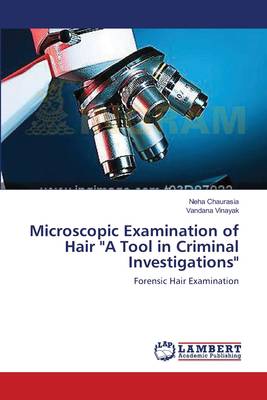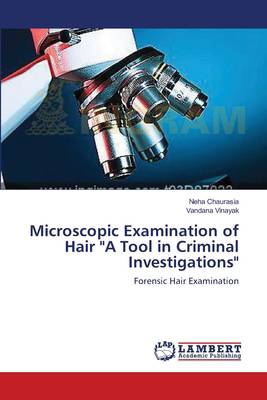
Je cadeautjes zeker op tijd in huis hebben voor de feestdagen? Kom langs in onze winkels en vind het perfecte geschenk!
- Afhalen na 1 uur in een winkel met voorraad
- Gratis thuislevering in België vanaf € 30
- Ruim aanbod met 7 miljoen producten
Je cadeautjes zeker op tijd in huis hebben voor de feestdagen? Kom langs in onze winkels en vind het perfecte geschenk!
- Afhalen na 1 uur in een winkel met voorraad
- Gratis thuislevering in België vanaf € 30
- Ruim aanbod met 7 miljoen producten
Zoeken
Microscopic Examination of Hair "A Tool in Criminal Investigations"
Forensic Hair Examination
Neha Chaurasia, Vandana Vinayak
Paperback | Engels
€ 60,95
+ 121 punten
Omschrijving
The scientific study of hair is called Trichology and when used in criminal justice delivery system, it is termed as Forensic Trichology. Forensic hair examination is a unique field developed especially for criminal investigation and it is not practiced in industrial and academic fields. The objectives of this study were: to collect and compare hair samples from different body parts of humans and animals, to compare microscopical data of different hair samples and analyze their forensic significance, and to compare human and animal hair. The research revealed that microscopic examination by an experienced scientist can help in narrowing down the search to origin of hair, even if the hair evidence is very minimal. Examination of exhibits under microscopes will always provide good information and investigation leads in a very non-destructive manner. It was also found that a careful microscopic examination of hair will reveal morphological features that can distinguish human hair from animal hair. One main advantage of Microscopic examination is that it can overcome the vast, critical and expensive method of DNA profiling.
Specificaties
Betrokkenen
- Auteur(s):
- Uitgeverij:
Inhoud
- Aantal bladzijden:
- 112
- Taal:
- Engels
Eigenschappen
- Productcode (EAN):
- 9783659630262
- Verschijningsdatum:
- 11/11/2014
- Uitvoering:
- Paperback
- Afmetingen:
- 150 mm x 220 mm
- Gewicht:
- 165 g

Alleen bij Standaard Boekhandel
+ 121 punten op je klantenkaart van Standaard Boekhandel
Beoordelingen
We publiceren alleen reviews die voldoen aan de voorwaarden voor reviews. Bekijk onze voorwaarden voor reviews.









